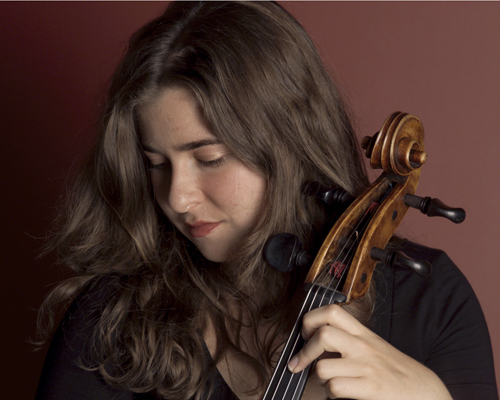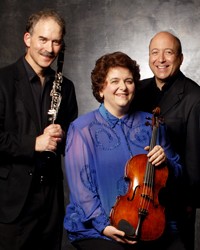On tonight's show:
Bravo! Vail Valley Music Festival
Charley anticipates Alisa Weilerstein's appearance with Inon Barnaton on the Friends of Chamber Music series next week. She has also appeared at the Bravo! Vail Valley Music Festival.
Beethoven: String Trio in G major, Op.9 No.1
Michelle Kim, violin
Cynthia Phelps, viola
Carter Brey, cello
Brahms: Cello Sonata No.2 in F major, Op.99
Alisa Weilerstein, cello
Adam Neiman, piano
recorded 7/22/03 & 7/15/03
Colorado Chamber Players
Charley anticipates the Colorado Chamber Players recital Wednesday at Shalom Park.
V. Rumanian Melody: Andante in F minor
Colorao Chamber Players
Daniel Silver, clarinet
Barbara Hamilton-Primus, viola
Andrew Cooperstock, piano)
KVOD Performance Studio: recorded 4/19/10
Produced by Martin Skavish
Program Notes
The three string trio of Opus 9 were published in July, 1798 with a dedication to Count Johann Georg von Browne-Camus. One of the Count's employees described him as "one of the strangest men, full of excellent talents and beautiful qualities of heart and spirit...[but] full of weakness and depravity."
The Count once gave Beethoven a horse in exchange for dedicating the Variations on a Russian Dance (WoO 71) to the Count's wife. Beethoven's pupil, Ferdinand Ries, recorded that "He rode the animal a few times, and soon after forgot all about it and, worse than that, its food also. His servant, who soon noticed this, began to hire out the horse for his own benefit and, in order not to attract the attention of Beethoven to the fact, for a long time withheld from him all bills for fodder. At length, however, to Beethoven's great amazement he handed in a very large one, which recalled to him at one his horse and his neglectfulness."
Biographer Lewis Lockwood notes Beethoven's previous works for string trio, the Trio in E flat major, Op.3 and the Serenade in D major, Op.8. "But with the three String Trios of Opus 9 we come to a higher level," he writes, "These three trios are the best of Beethoven's string chamber music before the Opus 18 quartets." At the time, Beethoven himself declared them "the best of my works."
Johannes Brahms (1833-1897): Cello Sonata No. 2 in F major, Op.99
I. Allegro vivace
II. Adagio affettuoso
III. Allegro passionato
IV. Allegro molto
Brahms wrote two cello sonatas, the first in 1865. Some twenty years would elapse before he wrote another. The F major sonata was composed in the Swiss town of Hofstetten, on the Lake of Thun, during the summer of 1886. It was inspired by the playing of young Robert Hausmann, the cellist in Joseph Joachim's quartet. And it was Hausmann, with Brahms at the piano, who introduced the work on November 24, 1886 in Vienna.
Biographer Karl Geiringer says the opening movement "differs in some respects from other compositions of the mature period. Its ardent pathos would be less surprising in Brahms's youthful compositions...Although the cello part has in general a much higher pitch than in the first Sonata, great strength of tone is required if the player is to assert himself against the tremoli of the piano, here employed to an extent which will hardly be found in any other work of the composer. It may be that Brahms did not `go for so many walks' with this work as was otherwise his wont...The Finale--a rather hastily elaborated Rondo--seems to have been written with quite peculiar speed, as though the master could hardly write fast enough to put the rush of ideas on paper."
The second movement's lyrical melody is shared by two instruments, the cello alternating between bowed and plucked expression. The third movement is a scherzo with strong rhythmic accents and a trio section containing a sweet melody played mostly by the cello.
"The writing in the Second Sonata,'' writes Karen Monson, "is more successfully idiomatic for the solo instrument than in the first. It takes the cello out of its low register and coincidentally establishes a more natural balance with the piano. In contrast to the E Minor Sonata, the F Major work is extroverted--more outwardly noble, dramatic and spirited, though not without warmly tender moments."
©2010 Charley Samson
